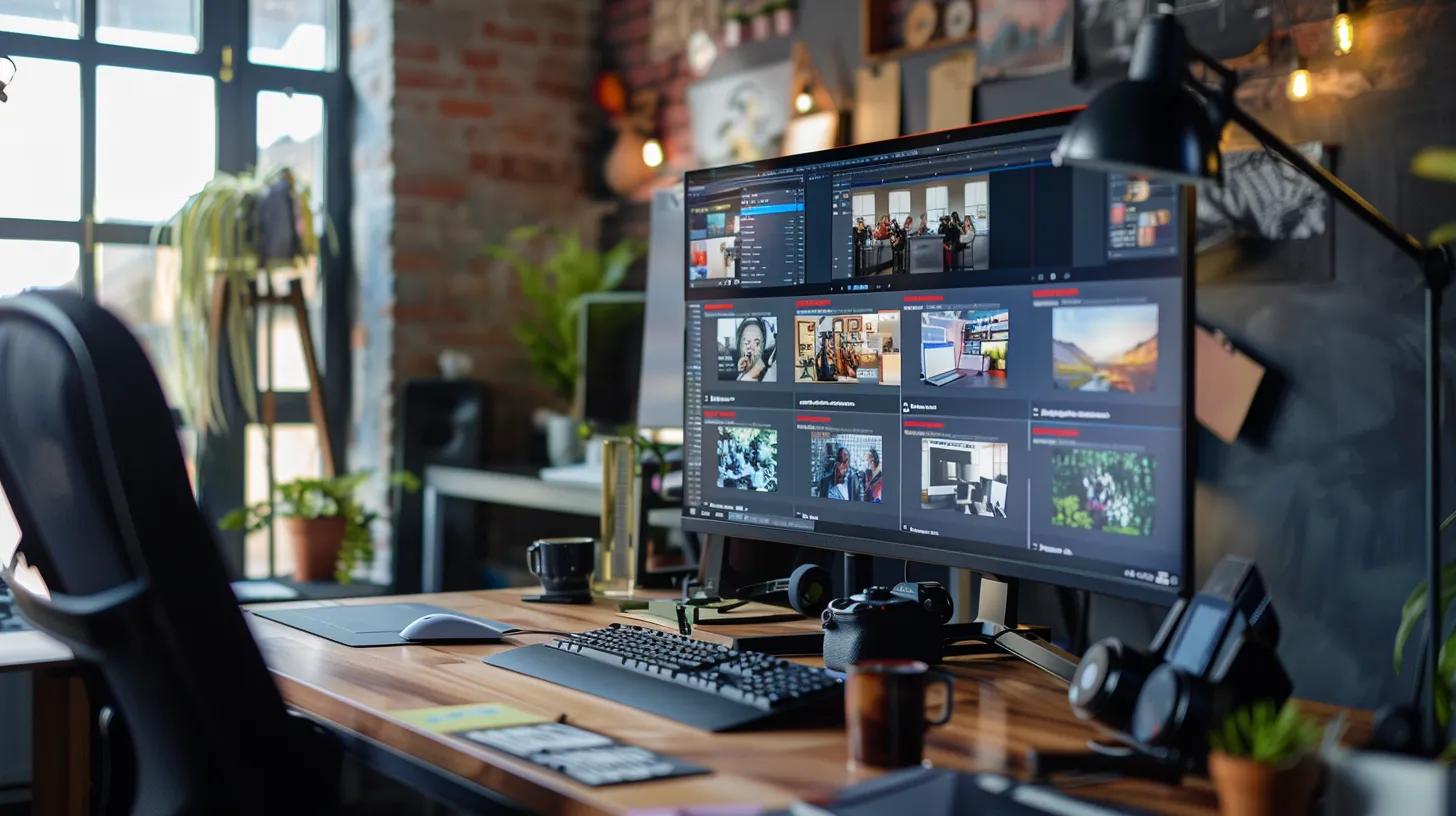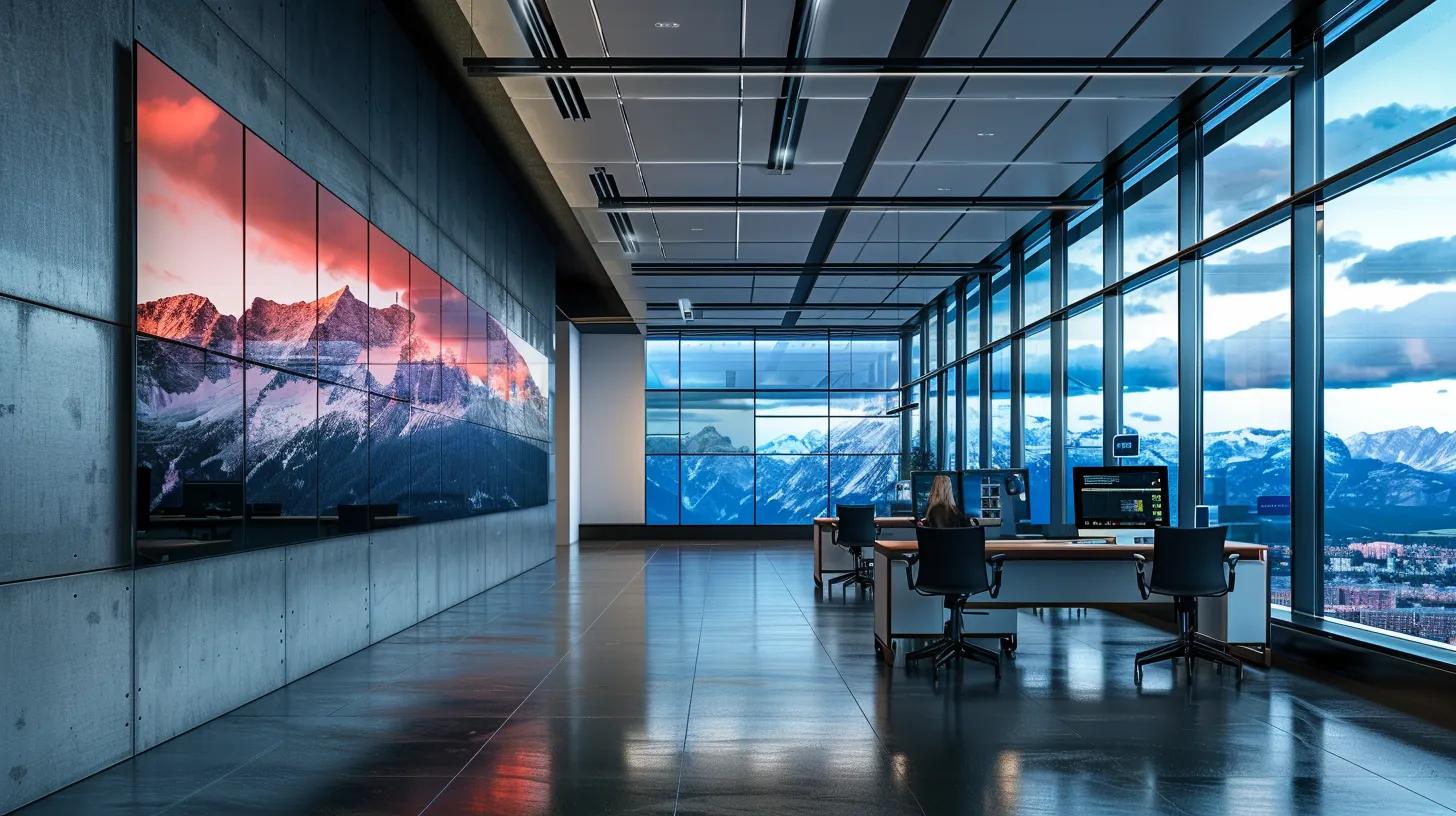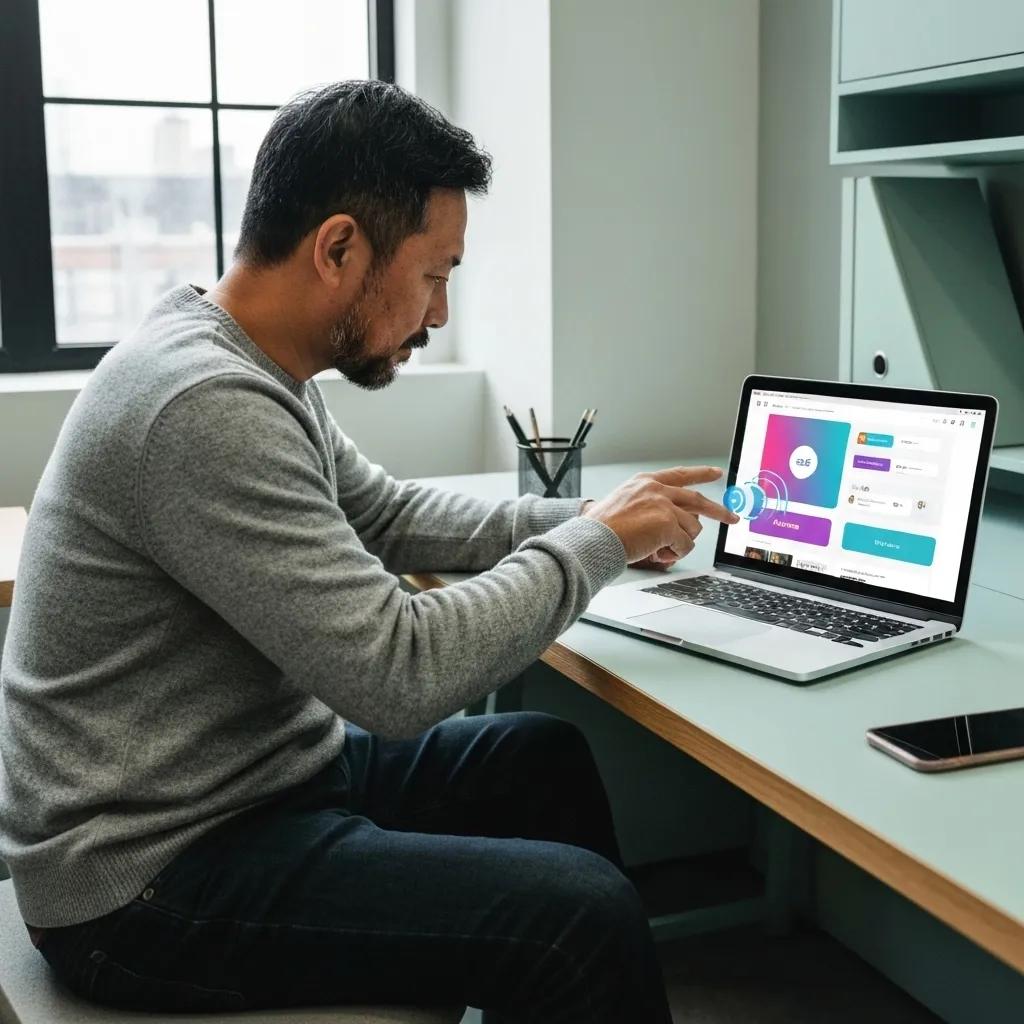Video backgrounds can add a striking, dynamic feel to your website—but when done poorly, they can just as easily slow performance or distract visitors. As a growing trend in modern web design, video backgrounds offer the potential to captivate users and communicate your brand message instantly. However, balancing aesthetics with usability is essential to ensure your site remains both beautiful and functional. In this guide, we’ll walk you through the key dos and don’ts of using video backgrounds effectively, so you can enhance user experience without compromising speed, clarity, or accessibility.
Mastering Video Backgrounds: Design Like a Pro
What Are Video Backgrounds and Why Use Them in Website Design?

Video backgrounds are full-screen moving visuals that play behind a website’s main content. They are used to create a more engaging and immersive experience for visitors by adding motion, emotion, and context to what would otherwise be a static page. When done well, they help draw attention, tell a visual story, and create a strong first impression—especially on a homepage or landing page.
Instead of relying on blocks of text or static images, businesses are increasingly using short video loops to give visitors a sense of brand identity right away. A video background might show a behind-the-scenes look at a company, slow-motion product footage, or abstract visual effects that align with the site’s tone. These moving elements can make a website feel more modern and professional, which is often the first step toward building trust with new visitors.
There’s research to support the idea that video can improve engagement. People tend to stay longer on sites with dynamic elements, and longer time on page often correlates with higher conversion rates. Video backgrounds also make it easier to convey mood and message quickly, especially for businesses trying to communicate who they are without overwhelming visitors with paragraphs of text. This can be especially useful for service-based businesses that want to showcase personality or company culture.
Another benefit is the visual focus that videos bring. A well-placed background video can direct attention toward a call-to-action or guide users through the layout of a page in a subtle but effective way. For instance, gentle motion in the background can draw the eye to a headline or a signup form without needing intrusive pop-ups or flashing buttons. This kind of design choice can support conversion goals without distracting from the overall experience.
Many brands also use video backgrounds as part of their broader marketing efforts. A homepage video might mirror the tone of a recent advertising campaign or tie into seasonal promotions. Since video content is often repurposed across platforms—such as social media or email campaigns—it makes sense to bring it onto the website as well. When a site’s visuals match what a visitor has seen elsewhere, it helps build familiarity and trust.
From a branding standpoint, video backgrounds can be used to reinforce color schemes, tone, and messaging. Subtle motion like bokeh effects or abstract textures can give a site a polished and cohesive look. For businesses that rely heavily on visuals—such as design firms, architecture studios, or lifestyle brands—video can be a strong tool for maintaining consistency across platforms.
That said, not every video works well in the background. The best results come from short, looping clips with muted tones that don’t compete with the foreground content. Sound is typically avoided in this context, and motion is kept minimal to avoid distracting from navigation or reading. It’s also important to consider load times and performance. A poorly compressed video can slow down a site, particularly on mobile devices, so developers often use lightweight video formats and fallback images for slower connections.
What Are the Key Dos for Using Video Backgrounds Effectively?

Using video backgrounds on websites can add visual interest and support storytelling, but they need to be handled carefully. When done right, they can improve user engagement and help reinforce a brand’s tone. The key is to make sure these videos support the page content instead of distracting from it. A successful video background doesn’t rely on visual appeal alone. It also needs to load quickly, play smoothly, and remain accessible to all users. Choosing the right format, compressing files for performance, applying clear design principles, and maintaining contrast between text and video are all essential. Overlooking any of these areas can lead to a slow or frustrating experience for users.
How to Choose the Right Video Format for Website Backgrounds?
Selecting the right video format affects both performance and compatibility. MP4 is the most widely supported format across browsers and devices, particularly when encoded with the H.264 codec. It offers a good balance between quality and file size. WebM is another option that often provides better compression, which can be helpful for faster load times. Performance should be tested under different network conditions to ensure videos don’t slow down mobile users or create lag. This is especially important for sites using looping videos or background footage on key pages like the homepage. Businesses often see a difference in bounce rates and time-on-site depending on how well their videos are optimized. A well-formatted video can support conversions, especially when used alongside a clear headline or call to action.
How to Optimize Video Backgrounds for Fast Loading and Performance?
Speed matters. If your background video takes too long to load, it can drive visitors away. Reducing file size through compression tools is a good first step. Cutting out unnecessary footage and limiting the video loop duration can also help. Using a content delivery network (CDN) ensures the video loads faster by serving it from a location closer to the user. Adaptive bitrate streaming, caching strategies, and lazy loading can all be used to fine-tune how video assets perform. These optimizations not only reduce page load times but also make the site more reliable across devices. Keeping an eye on site performance through analytics tools is essential to catch any slowdowns early.
How to Ensure Accessibility When Using Video Backgrounds?
Not everyone wants to view a site with motion elements playing in the background. Some users find it distracting or overwhelming, while others may have visual sensitivities. Respecting browser-level reduced motion settings can improve the experience for these visitors. Including fallback images for devices or browsers that can’t display video is also helpful. Text overlays should always maintain high contrast with the background.
Simple design choices like adding a color overlay to the video can make the text easier to read. Giving users control over playback—such as a pause or mute option—ensures that motion doesn’t become a barrier. Meeting accessibility guidelines (such as WCAG) is about more than compliance. It ensures a broader audience can use your site comfortably. When videos are central to your site’s identity, make sure their design still works for everyone.
How to Use Text Overlays Effectively on Video Backgrounds?
Text placed over video should be easy to read. Without enough contrast, your message can get lost. Using transparent color overlays or subtle drop shadows can help the text stand out without overwhelming the visuals. Keep the message short. Text overlays are not the place for detailed explanations. Use simple, direct language that ties into the rest of your site. A short phrase like “Explore Our Work” or “See What We Do” can be more effective than a sentence that tries to explain everything at once. Positioning is also important. On smaller screens, text should resize or reposition to stay readable. Responsive CSS ensures that your video background and text overlays adapt to different devices without sacrificing clarity.
What Are the Common Don’ts to Avoid With Video Backgrounds?

Video backgrounds can make a website more engaging, but when misused, they can do more harm than good. Mistakes like slow-loading files, hard-to-read text, and poor placement can negatively affect usability and performance. Understanding what not to do is just as important as following best practices. Avoiding these issues begins with solid preparation and attention to detail. Websites that rely heavily on video elements need to balance aesthetics with speed, clarity, and accessibility. When video is used carelessly, it can frustrate users, drive up bounce rates, and even hurt search engine rankings.
Why Should You Avoid Large, Uncompressed Video Files?
Large video files slow down a website. If a video isn’t compressed properly, it can increase page load times significantly, especially for users on slower networks. This delay causes many visitors to leave before the site even finishes loading. Keeping video sizes in check through compression is essential for performance. It helps the site remain fast and responsive, which improves both user experience and search visibility. Without it, even well-designed pages can feel clunky and unpolished. Speed remains a critical factor in user satisfaction, and bulky files are one of the easiest problems to avoid with the right preparation.
What Are the Risks of Poor Contrast and Readability?
If visitors can’t read the text over a video background, the message is lost. Poor contrast between the video and any overlaying content can confuse users and make navigation difficult. Designers need to ensure that all text is clearly legible against the motion behind it. This often means testing color combinations, adding overlays to darken or lighten the video, and positioning text in a way that doesn’t compete with the background. Ignoring contrast issues can lead to higher bounce rates, accessibility concerns, and reduced overall effectiveness of the site’s messaging. Ensuring clarity is non-negotiable if the goal is to keep users engaged.
Why Is Autoplay Without Controls a Bad Idea?
Videos that autoplay without giving users control over playback can backfire. Some visitors may be in a quiet setting where sudden sound is disruptive. Others may be on limited data plans and will quickly leave if a video loads without permission. Autoplay without controls removes user choice. Allowing visitors to pause, mute, or skip a background video ensures they stay in control of their browsing experience. In a time when attention spans are short and users have many choices, removing friction like this makes a difference. Giving people control builds trust and encourages them to stick around longer.
How Can Overusing Video Backgrounds Harm Website Performance?
While one well-placed video can enhance a website, too many can cause problems. Overusing video backgrounds leads to longer load times, makes pages feel cluttered, and often competes with key content. Websites that place videos in every section or on every page can become visually overwhelming. Visitors may have trouble knowing where to focus, which weakens any messaging or calls to action. Video should be used sparingly and strategically to highlight specific sections. When every part of a page is moving, the impact of each video is reduced.
What Mistakes to Avoid in Video Background Placement?
Where a video appears on the page matters just as much as how it looks. Placing a video behind essential content, such as navigation menus or calls to action, distracts users and makes important information harder to see. This kind of placement disrupts the natural flow of a site and can make it frustrating to use. Video backgrounds should support the content, not overshadow it. Good placement means using videos to guide the eye and create a visual break, not to compete with headlines or buttons. When done correctly, they improve the user experience rather than complicate it.
How to Implement Video Backgrounds: Step-by-Step Best Practices?

Using video as a background can add visual interest and help a website stand out. But implementing video correctly requires careful planning. From choosing the right format to writing clean code and troubleshooting playback issues, each step plays a role in ensuring the site remains fast, accessible, and visually consistent across devices. This guide breaks down the essential steps for designers, developers, and marketers looking to use video backgrounds effectively—without slowing down performance or interfering with user experience.
What Are the Recommended Video Formats and Compression Techniques?
Video backgrounds must strike a balance between visual quality and file size. Two of the most commonly used formats for web-based video are MP4 and WebM. MP4, when paired with the H.264 codec, is widely supported and keeps file sizes manageable without sacrificing too much clarity. WebM is often used as a backup format for compatibility with certain browsers. Compression tools like HandBrake allow you to control bitrate and resolution to ensure your video plays smoothly across different devices. A resolution of 720p or 1080p is typically enough for background use. Compressing files without losing noticeable quality helps improve loading speeds and reduces strain on mobile users’ data.
How to Add Video Backgrounds Using HTML, CSS, and JavaScript?
Once your video is ready, the next step is adding it to your website. HTML5’s <video> tag supports autoplay, mute, and loop functions, which are typically necessary for background use. By using CSS, you can ensure the video stretches to fill a particular section or the entire screen, while maintaining responsiveness across screen sizes. JavaScript is often used to fine-tune playback, trigger fallback elements, or add custom controls if needed. Including a fallback image is important for accessibility and ensures that users with limited bandwidth or unsupported browsers still see a cohesive design.
How to Troubleshoot Common Video Background Issues?
Some problems can arise when using video backgrounds, especially with mobile devices or slower connections. Autoplay may not work if the video is not muted. Inconsistent display across different browsers is also a frequent issue. To resolve these problems, start with cross-browser testing to check how your video appears on Chrome, Firefox, Safari, and Edge. Use developer tools in the browser to inspect elements and spot bugs. A strong content delivery network (CDN) can help ensure faster loading and reduce buffering issues. If you’re working in a CMS like WordPress, occasional performance audits can uncover script conflicts or plugin-related slowdowns.
What Tools Help Optimize Video Backgrounds for Websites?
Several tools are available to make the process of editing and optimizing video backgrounds easier. HandBrake and Adobe Premiere Pro are reliable options for compressing video without sacrificing quality. For performance testing, PageSpeed Insights and GTmetrix can highlight issues like slow loading times, poor responsiveness, or render-blocking elements. In WordPress, certain plugins are available that support background video functionality. These tools typically include responsive settings and fallback support. Whether you’re using custom code or a plugin-based approach, the goal is to keep your background video lightweight and your page fast.
How Do Advanced Video Background Techniques Improve Website Design?

Advanced video background techniques can significantly enhance website design by creating more interactive and personalized experiences for users. Features like interactive overlays, real-time responsiveness, and 3D visual effects allow websites to go beyond passive visuals and offer something more dynamic. These elements help communicate a brand’s identity while encouraging longer visits and stronger user engagement. Modern web users expect websites to be not just informative, but visually compelling. Advanced video elements provide an opportunity to meet those expectations while supporting broader marketing efforts. When implemented well, these techniques can create stronger emotional connections, improve brand recall, and increase the chances of converting visitors into customers.
What Are Interactive and Personalized Video Backgrounds?
Interactive video backgrounds respond to user behavior in real time. Rather than simply looping behind content, they react to scroll activity, mouse movement, or specific user inputs. This kind of responsiveness makes the site feel more alive and creates a sense of participation that keeps users engaged longer. In some cases, developers use JavaScript APIs to add clickable hotspots that reveal more information or trigger visual changes in the background.
For example, a video might start with a dark tone and shift to a brighter version as the user scrolls or hovers over specific areas. This interactivity reinforces messaging by creating a direct link between user behavior and visual feedback.
Personalized backgrounds take things a step further by adjusting content based on demographic data or browsing history. Visitors might see different visuals depending on their location, time of day, or past interactions. These changes happen seamlessly and are designed to match the user’s preferences, which can improve engagement and retention.
How Are 3D and AI-Powered Video Backgrounds Used?
3D video backgrounds use depth and motion to add visual complexity to a site without requiring user interaction. They might simulate a camera moving through a virtual space or create layered effects that add richness to the experience. These elements are especially useful for industries that rely on visual storytelling, such as architecture, travel, or technology.
AI-powered video backgrounds bring even more flexibility. They can automatically adjust brightness, contrast, or animation speed depending on the user’s device, location, or behavior. Some AI tools can even swap out entire video segments in real time to match the user’s interests. These capabilities allow brands to deliver a more relevant and seamless experience, while keeping page load times and design coherence in check. Both 3D and AI-driven backgrounds serve to elevate the design without sacrificing usability. They can subtly guide users through a site, direct attention to key areas, or simply create a more memorable impression.
How Can Advanced Techniques Enhance Brand Storytelling?
Brand storytelling is most effective when it is consistent, clear, and emotionally resonant. Advanced video backgrounds provide a way to tell that story visually from the moment someone lands on a site. Every movement, transition, or visual cue can reinforce what a brand stands for. For example, a nonprofit might use slow, panning shots of real-world impact to connect with viewers emotionally. A creative agency might showcase snippets of past work in the background to demonstrate capability and style. A travel brand could use destination-themed videos that shift based on the visitor’s scrolling path, simulating the feeling of a journey.
When video is used intentionally and aligned with a brand’s core message, it becomes more than decoration—it becomes part of the narrative. Coupled with clear navigation and thoughtful content, video backgrounds can be powerful tools for building trust and driving action.
How to Measure the Impact of Video Backgrounds on Website Performance and SEO

Video backgrounds can add energy and visual interest to a website, but they must be carefully monitored to ensure they don’t negatively affect performance or search rankings. To evaluate their impact, it’s essential to track specific metrics like load time, user engagement, bounce rates, and conversions. Tools such as Google Analytics, PageSpeed Insights, and GTmetrix can help identify whether your video assets are supporting your goals or slowing things down. When implemented correctly, video backgrounds can boost visual appeal and help communicate brand identity. However, they must work alongside core technical standards and marketing priorities, not against them. Measuring their impact helps ensure that you maintain a fast, accessible, and effective site.
What Metrics Indicate Video Background Effectiveness
Some of the most telling metrics include bounce rate, average session duration, and the number of visitors who click through to key areas of your site. If users are leaving quickly or not interacting, your video background may be more of a distraction than a benefit. Heatmaps and interaction tracking can offer additional insight into how users are navigating your site. Are they engaging with your main messaging? Are they scrolling past the video or pausing to watch? The answers can guide design tweaks that improve clarity and retention. Regularly reviewing these analytics can help ensure that your visuals are not just eye-catching but also contribute to meaningful engagement. Ideally, video should support your message, guide user behavior, and improve key marketing outcomes.
How to Optimize Video Backgrounds for Search Engines
From a technical standpoint, video backgrounds require thoughtful setup to maintain SEO performance. The most important steps include compressing the file to reduce load times, using fallback images for mobile devices or slow connections, and including accurate metadata such as file descriptions and alt text.
Search engines don’t “see” video the way humans do, so giving them context through metadata helps your content get indexed properly. File names should be descriptive, and captions or transcripts should be used when appropriate. Structured data markup (schema) can also signal the relevance of your video content and improve visibility in search results.
Balancing quality and performance is essential. A large, uncompressed video might look great, but if it increases load time significantly, you could lose visitors and hurt your rankings. Use tools that evaluate speed and user experience regularly, and be ready to make adjustments.
How Does Structured Data Improve Video Background SEO?
Structured data allows search engines to better understand the purpose and content of video elements on your site. Marking up your videos with schema.org properties like VideoObject can enable rich search results, including thumbnails and video descriptions. This can increase the visibility of your site and encourage more clicks from search results. Rich snippets help users quickly understand what your page offers, which can improve click-through rates and reduce bounce. This structured approach also signals credibility and organization, two factors that can contribute to improved ranking over time.
What Are the Best Practices for Balancing Video Backgrounds and SEO?
The challenge with video backgrounds is balancing style with performance. To maintain fast load times, use compressed files and consider lazy loading techniques that delay video playback until necessary. Make sure your text overlays are easy to read, and that the video doesn’t obscure important calls to action. Conduct regular performance audits to check how your site is running, especially after adding or modifying video content. A/B testing different formats and placements can help you determine what works best for your audience.
Ultimately, video backgrounds should serve the user experience, not distract from it. When used correctly, they can strengthen branding and engagement while still supporting SEO and conversion goals. Consistent monitoring and small technical adjustments make all the difference in maintaining a high-performing, visually compelling website.
What Are the Latest Trends and Future Directions in Video Background Design?

Video backgrounds continue to evolve alongside modern web design trends. Today’s best practices lean toward more interactive, visually rich experiences that are carefully optimized for performance. This includes the growing use of AI to personalize what users see, as well as the addition of 3D visual elements to add depth and motion. These features are becoming more common as businesses look for new ways to hold attention and communicate their brand message quickly.
Rather than relying on flashy visuals alone, many companies are using video strategically to tell a story, support key messaging, or guide users toward specific actions. The focus is shifting from decoration to purpose, and the most effective implementations are ones that feel intentional, relevant, and well-balanced with the rest of the site’s content and structure.
How Are Market Demands Shaping Video Background Usage?
Today’s users expect fast, engaging, and responsive websites. This means video backgrounds need to do more than just look good. They must load quickly, play smoothly on different devices, and support the overall user experience. In response, designers are becoming more selective about where and how they use background video.
Rather than placing video across every page, many websites now limit it to the homepage or key landing sections. When used in the right spot, it can highlight a brand’s personality or showcase a product or service in motion, which helps keep users interested and encourages them to explore further. Site performance still plays a major role in how these elements are received. Even the most engaging background video will backfire if it slows down the page or gets in the way of content. As a result, optimizing video assets and ensuring they work well across devices is now a top priority.
What Role Do User Preferences Play in Video Background Personalization?
One of the biggest shifts in design is the growing emphasis on personalization. Many websites now adjust what users see based on location, time of day, or previous browsing activity. This includes serving up different background videos that reflect user interests or reinforce a targeted campaign.
This kind of tailored experience helps create a more direct connection between the brand and the visitor. When users feel like the content is speaking to them specifically, they tend to stay longer, engage more, and convert at higher rates. The challenge for designers is to build systems that make these adjustments seamlessly, without disrupting the flow of the site. Personalized video backgrounds are just one piece of this larger trend, but they play a valuable role in reinforcing brand relevance and making digital experiences feel less generic.
How Will AI and 3D Technologies Transform Video Backgrounds?
AI and 3D visual design are quickly becoming part of the toolkit for websites looking to stand out. AI can be used to automatically change video content based on user behavior or preferences. For example, if someone visits a site from a colder climate, the background might reflect a cozy indoor scene, while someone in a warmer region might see a bright, sunny setting. These small shifts can make the experience feel more relevant and engaging.
Meanwhile, 3D effects add an extra layer of depth and realism. They help draw users in, especially on homepages or product-focused pages. When executed properly, these elements can help communicate complex ideas or highlight product features in ways that static visuals cannot. Looking ahead, the use of video backgrounds will likely continue to expand—but in smarter, more measured ways. By combining the technical strengths of AI with creative 3D storytelling, websites can offer more immersive, personalized experiences that still perform well and support overall design goals.
Frequently Asked Questions
Q: What are video backgrounds? A: Video backgrounds are moving visuals that play behind a website’s primary content. They’re often used to capture attention, create atmosphere, and help tell a brand’s story. When used effectively, they can make a website feel more modern and engaging, especially on landing pages or sections where first impressions matter. The goal is to enhance the user experience without distracting from the core message or slowing down performance.
Q: How do I optimize video backgrounds without affecting site speed? A: To keep your site running smoothly, it’s important to compress video files before uploading. Formats like MP4 and WebM are widely supported and can offer good quality at smaller file sizes. Lazy loading techniques ensure videos only play when needed, which reduces the load on the browser. Hosting videos on a content delivery network (CDN) can also improve loading times by serving content from servers closer to the user. Regular testing and performance monitoring help identify slowdowns before they affect your visitors.
Q: Can video backgrounds improve SEO? A: They can, but only when properly optimized. A fast-loading, mobile-friendly site with engaging content tends to perform better in search rankings. Video backgrounds that are lightweight and well-integrated into your site’s structure can help lower bounce rates and increase user engagement, both of which are positive SEO signals. Adding appropriate metadata, fallback images, and ensuring accessibility all play a role in supporting strong search performance.
Q: What common mistakes should be avoided when using video backgrounds? A: One of the most common issues is using large video files that slow down the site. Overly busy or distracting video content can also make it hard for users to focus on the main message. Poor contrast between video and overlaid text can reduce readability, and autoplaying videos without sound or playback controls may frustrate some visitors. It’s also a mistake to use video backgrounds in too many places—one or two well-placed videos are often more effective than covering every page.
Q: How do advanced techniques like AI and 3D enhance video background design? A: AI and 3D visuals are increasingly being used to create more personalized and immersive experiences. AI can adjust the video content in real time based on factors like user behavior, location, or time of day. This adds a layer of relevance that keeps visitors more engaged. 3D video effects add depth and realism, helping websites stand out and communicate more complex ideas or emotions through visuals alone. These advanced techniques can support branding by making a site feel polished and interactive.
Q: How can accessibility be ensured with video backgrounds? A: Accessibility is key to creating a user-friendly site. Start by providing fallback content, like static images, for users who cannot load video. Make sure the text that appears over the video has enough contrast to be easily read. Avoid videos that autoplay with sound, and always include playback controls when possible. Following accessibility guidelines, such as those outlined in the WCAG standards, helps ensure your site is usable for everyone, regardless of ability.
Q: What are the future trends in video background design? A: The use of video backgrounds is becoming more strategic and technology-driven. Looking ahead, expect to see more AI-driven personalization, where video adapts to the user in real time. Interactive 3D video will also become more common, allowing for richer visual storytelling. The trend is moving toward using video to create immersive, fast, and responsive websites that deliver meaningful experiences while maintaining performance and accessibility standards.
Final Thoughts
When used thoughtfully, video backgrounds can elevate your website’s storytelling, draw visitors in, and reinforce your brand’s personality—just remember to keep file sizes optimized, maintain clear focal points, and always test for accessibility. By balancing visual impact with usability, you’ll create a site that captivates without compromising performance. Ready to leverage video backgrounds the right way? Newman Web Solutions is here to help you plan, design, and implement an engaging, high-performance website design. Call us at (404) 301-9189 or schedule a free 30-minute strategy session today to bring your vision to life!





